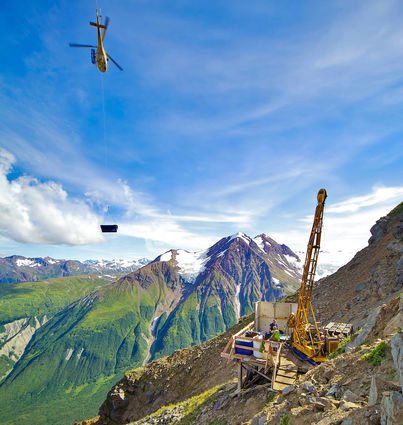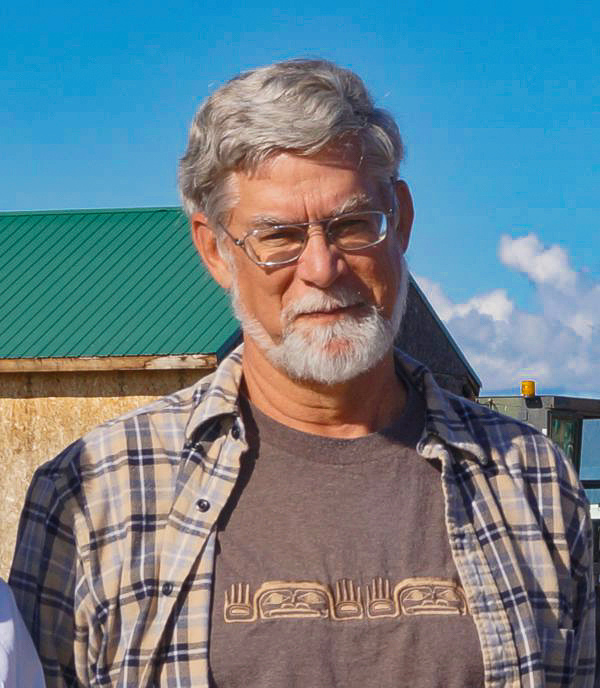Metals feel love, explorers not so much
As base metals enjoy healthy price gains and gold rockets above $1,400/oz, explorers continue to face stiff headwinds North of 60 Mining News – July 1, 2019
Last updated 9/25/2020 at 5:18pm

Pexels
While the price for an ounce of gold has rocketed past US$1,400, the junior mineral exploration sector continues to face headwinds when it comes to raising venture capital.
Earlier this month S&P Global put out a summary indicating that during the first quarter of 2019 metals like copper, zinc and nickel were up quarter over quarter by 11 percent, 22 percent and 25 percent, respectively.
More recently gold has skyrocketed beyond the $1,400-per-ounce mark for the first time in many months. Correspondingly, the mining industry's aggregate market cap also rebounded strongly in the period after four bearish quarters, rising 12 percent to $1.43 trillion from $1.28 trillion in the fourth quarter of 2018. Other metal market indices recovered most or all of the losses they incurred in the final quarter of 2018.
Unfortunately, the exploration sector did not feel the love, continuing to face stiff headwinds with respect to raising venture capital. Funds raised in the first quarter of 2019 totaled $3.25 billion, down 15 percent from the $3.85 billion raised in the prior quarter. This marks a second consecutive quarter with the lowest amount raised since S&P began compiling these statistics at the beginning of 2013. Not surprisingly, new drill results declined in the first quarter, dragging S&P's Pipeline Activity Index, or PAI, down by 31 percent quarter over quarter, to its lowest point since the first quarter of 2016.
Likewise, mergers and acquisitions remained depressed showing only 30 deals of more than $5 million in the first quarter, only five more than the 25 deals recorded in the first quarter of 2016, which was the lowest recorded level of transaction activity.
Although news from Alaska projects this month is sparse, that will change shortly as initial summer exploration data become available. At present I am tracking over 35 projects across Alaska with exploration budgets of $100,000 or more.
WESTERN ALASKA
Nova Minerals Ltd. provided an exploration update on their Estelle gold project in the western Alaska Range. Induced polarization ground geophysics surveys at the Oxide prospect revealed several chargeability anomalies including a moderate chargeability anomaly associated with the location of historic drill hole SE12-001 that intercepted 387 meters grading 0.40 grams of gold per metric ton and three other chargeability anomalies on another line that included a strong chargeability anomaly associated with the Oxide South alteration zone defined during the 2018 geologic mapping program; a moderate chargeability anomaly beneath undrilled sedimentary cover; and an additional anomaly associated with historical drill hole SE12-004 that intercepted 41.45 meters grading 1.14 g/t gold. The company also indicated that reverse circulation drilling had begun on the Oxide North prospect where a series of holes are planned to test broad envelopes containing argillic-phyllic to propylitic hydrothermal alteration. Drill results are pending.
INTERIOR ALASKA
Contango ORE Inc. announced that the joint sale process for the Peak gold-silver-copper project with its partner Royal Alaska, LLC, a wholly owned subsidiary of Royal Gold Inc. had concluded without entering into a definitive change of control transaction. The company indicated that it had received indications of interest that did not meet its value expectations. While this effort is being conducted, the partners began a $6.9 million 2019 exploration program on the project. Budgeted work included surface recon geochemistry; induced polarization geophysical coverage over new and existing exploration targets; permitting activities on the Main Peak and North Peak resource areas; and approximately 5,000 meters of new drilling on exploration prospects. Both porphyry and skarn type exploration prospects have been identified over the 850,000-acre Peak Gold property
ALASKA RANGE
PolarX Ltd. announced that it had entered into a joint venture on its Alaska Range project with Alaska newcomer Lundin Mining Corp. The agreement covers the Stellar claims but does not include the claims where the Zackly skarn deposit is located. Under terms of the deal, Lundin will acquire 53.4 million shares in PolarX for AU$4.3 million, following which Lundin will become PolarX' largest shareholder, owning 14.3 percent of the company. This share subscription secures an exclusive option for Lundin to enter into an earn‐in joint venture on porphyry copper-gold targets within PolarX's Stellar claims. The initial investment will be used for exploration of the Stellar claims during 2019 with a decision whether or not to continue the earn‐in following a 30-day review period. Lundin can earn 51 percent interest in the Stellar claims by expending an additional US$24 million and making cash payments of US$20 million over a three-year period. Welcome to Alaska Lundin Mining!
White Rock Minerals Ltd. and its joint venture partner Sandfire Resources NL announced the start of drilling and other exploration efforts at its Red Mountain volcanogenic massive sulfide project in the Bonnifield District. Initial drilling will include follow-up on the new massive sulfide mineralization discovered at the Hunter prospect in 2018 and then move to testing of the best of the regional targets defined by the multidisciplinary use of airborne electromagnetic geophysical surveys; 2018 stream geochemical anomalies; new satellite defined alteration; whole rock lithogeochemical alteration; ground soil and rock geochemistry; and surface and down-hole electromagnetic ground geophysics. Initial ground reconnaissance exploration has begun on previously defined geochemical anomalies on the more than10-kilometer- (six miles) long Glacier Trend and in the Platypus area west of the Dry Creek deposit where one of the stream samples returned a 1 percent zinc anomaly. Initial 2019 field work defined a new drill target, the Arete prospect in the central Glacier Creek trend. Ground electrical geophysics has also included a line of magnetotellurics undertaken to define the depth of the target volcanogenic massive sulfide horizon in the undrilled syncline between the West Tundra Flats and Dry Creek deposits. Initial interpretation of this line suggests the keel of the syncline is shallower than previously thought. The first three diamond drill holes for this season's program have been completed with no significant massive sulfide mineralization intersected. One hole was completed 2,000 meters west of the West Tundra Flats deposit while the other two holes tested on strike and down dip of the Hunter prospect, discovered in 2018. Down-hole electromagnetic geophysical surveys on these holes did not indicate the presence of nearby sulfide mineralization.
SOUTHEAST ALASKA
Constantine Metal Resources Ltd. announced a preliminary economic assessment (PEA) on the Palmer polymetallic project, a joint venture between Constantine (51 percent and Dowa Metals & Mining Co. Ltd. (49 percent). Highlights of the PEA – assuming base case metal prices of US$1.22 per pound zinc, US$2.82/lb copper, $16.3 per ounce silver, $1,296/oz gold and US$220 per metric ton barite – return a US$354 million pre-tax net present value (NPV) at 7 percent discount rate and a US$266 million after-tax NPV at 7 percent discount rate. The project generates a 24 percent pre-tax internal rate of return on investment (IRR) and 21 percent post-tax IRR. The PEA envisions a mine life of 11 years after 24-months of pre-production construction. Operations are based on a 3,500 metric-ton-per-day underground mining and processing rate with operating costs of US$54.20 per metric ton. Operating plus sustaining capital cost were estimated at US$65.40 per metric ton with net operating income of US$92.60 per metric ton. Zinc cash costs, including sustaining capital, came in at US11 cents per pound net of by-product credits. Pre-production development capital costs were US$278 million with sustaining capital and closure cost of US$140 million giving a total life-of-mine capital cost of US$418 million. Post-tax payback period was estimated at 3.3 years. Cost estimates are based on mining 12.48 million metric tons at a diluted head grade of 4.24 percent zinc, 0.81 percent copper, 49.6 grams of silver per metric ton, 0.33 g/t gold and 22.6 percent barite (barium sulfate). Life-of-mine recovered metal production is estimated at 1.07 billion lb of zinc, 196 million lb of copper, 18 million oz of silver, 91 thousand oz of gold and 2.89 million metric tons of barite. The PEA models concurrent mining of both the Palmer and AG Zone deposits. Site topography enables lateral underground access to the base of the deposits and bottom-up, gravity assisted mining. Mine design utilizes longhole mining methods, subvertical ore passes, and an underground crusher and conveyor to deliver mineralized material to the mill. Zinc, copper and barite concentrates will be produced. The mill incorporates a standard 3,500-metric-ton-per-day comminution, flotation separation flowsheet including a primary underground crusher feeding a single semi-autogenous mill feeding a ball mill, followed by selective two and three-stage flotation to produce copper, zinc and barite concentrates for shipment to offsite smelters. A fourth concentrate (pyrite) will also be produced for placement underground as paste backfill. Copper and zinc concentrates will be shipped by covered, dual-trailer, 40-metric-ton concentrate trucks to the port of Haines where the concentrate trailers will be shuttled by barge to the existing ore-terminal located in Skagway for loadout onto ocean going cargo vessels to Asian smelters. All-in cost for transportation from mine site to end destination for copper and zinc concentrates is US$91 per metric ton of concentrate. The PEA envisions a combined tailings management and waste rock storage facility on surface, non-contact water diversions and provisions for contact water collection and disposal. An estimated 78 percent of tailings will be utilized as backfill, including all pyrite concentrate and over half of the desulfurized tailings. The PEA assumed that the majority of the mine's 220 full time employees and 40 additional fulltime contractors would reside in the local community of Haines. The PEA includes installation of a 12.5 megawatt liquefied natural gas electrical power plant, using five CAT 2500 kilowatt generators. The cost of power is estimated at US15 cents per kilowatt, exclusive of the generator's own operating and maintenance labor costs. A sensitivity analysis demonstrates the project is resilient to lower metal prices and higher costs. Project economics are most sensitive to the price of zinc, with strong leverage to higher prices.
Northern Cobalt announced that it has completed an assessment of the potential for iron ore to contribute to the Snettisham vanadium project south of Juneau. A three-hole diamond drilling program is planned for late June start-up to test the validity of the magnetic model. Initial work by the company focused on the vanadium potential of the project however historic metallurgical test work suggests Snettisham can produce a high grade and quality magnetite concentrate grading 66.1 percent iron, 2.85 percent titanium oxide, 0.66 percent vanadium pentoxide and less than 0.01 percent phosphorus. The iron ore target ranges being considered range from a low-grade target of 1 to 2 billion metric tons in the 14-26 percent iron range, to a high-grade target of 300 to 550 million metric tons in the 28-52 percent iron range. Mineralization at the project is associated with a zoned Alaska-type mafic-ultramafic intrusive complex containing titaniferous magnetite mineralization. The main host is a pyroxenite unit which outcrops over an area of approximately 3,800 meters by 1,500 meters along the coast of the Snettisham Peninsula. Magnetite mineralization within this body averages approximately 20 percent iron based on historical drilling and rock chip sampling undertaken by the United States Geological Survey. A higher grade body of magnetite mineralization within the pyroxenite body is indicated by a significant magnetic anomaly extending for over 2,500 meters by 600 meters in the southeastern part of the intrusion. This body averages greater than 40 percent iron based on magnetic susceptibility calculations.
Curtis J. Freeman CPG #6901
Avalon Development Corp.
P.O. Box 80268
Fairbanks, AK 99708
Phone: 907-457-5159,
Fax 907-455-8069












Reader Comments(0)